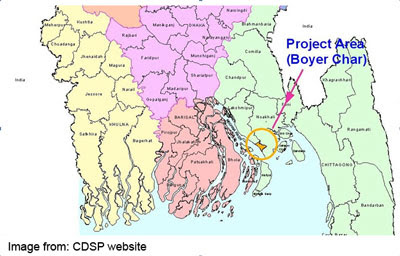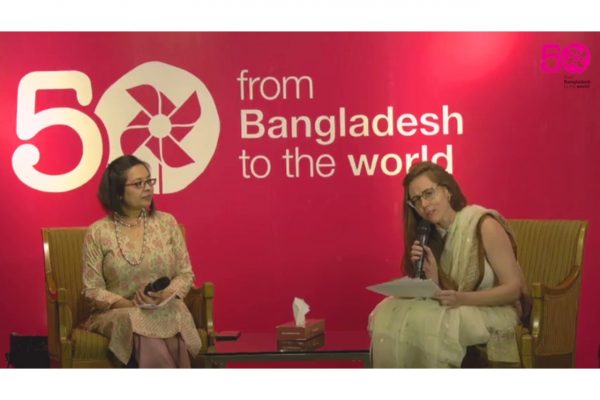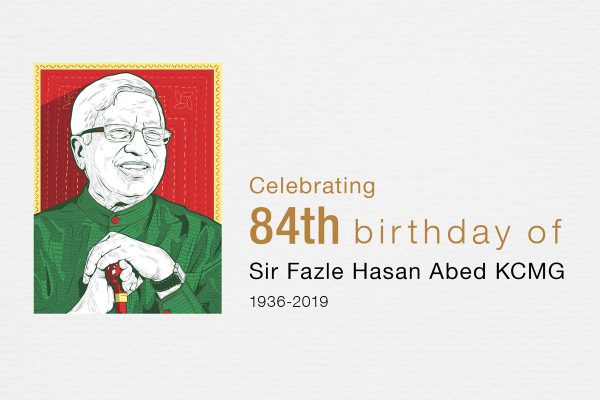Field Trip to Noakhali: learning more about the lives of char settlers
November 27, 2011
Reading Time: 3 minutes
Last week, I was part of an interdisciplinary team that traveled to Noakhali. Our task: to understand the unique challenges facing the villagers living in Bangladesh’s chars and envision how BRAC could create an integrated program tailored to their needs.
Last week, I was part of an interdisciplinary team that traveled to Noakhali. Our task: to understand the unique challenges facing the villagers living in Bangladesh’s chars and envision how BRAC could create an integrated program tailored to their needs. Chars are newly formed land masses as a result of gradual deposit of silt carried down by major rivers. In addition to natural hardships like frequent flooding and lack of fresh water due to salinity, in many cases chars fall between administration areas and lack formal government and basic services. Drawn by the opportunity to claim and own land, an estimated 6.5 million Bangladeshis live on chars (that’s about 5% of the population), many in dire poverty.
In 1994, the Government of Bangladesh established the Char Development and Settlement Program (CDSP) to bring together multiple ministries and non-governmental organizations to develop infrastructure and build social capital on the chars. Now entering its fourth phase, the program has reached almost 900,000 char-dwellers with services ranging from microfinance to schools to reforestation. BRAC joined the efforts in 2005 mainly to coordinate and support the activities of five NGOs working in Boyer Char, the designated area of the third phase of CDSP. Though a recent BRAC study showed some significant improvement in livelihoods of the participant households, the authors mention that only a modest impact on education has been achieved.
When the third phase came to a close in 2010, funding for all activities in Boyer Char ended. Some initiatives, such as a new elementary school, continued through community financing. Many programs were unable to sustain themselves, despite great need. As BRAC was already in the process of applying to implement programs in the chars chosen for the fourth phase, several BRAC staff suggested that we consider establishing programs in Boyer Char as well. With me on this field visit were a diverse group of colleagues, representing programs including Human Rights & Legal Aid Services, Community Empowerment, Gender Justice & Diversity, Microfinance, and Water, Sanitation & Hygiene.

We drove onto the char using a new road with a sturdy bridge that crossed the channel. As we’re entering the dry winter season, we were spared the threat of flood. Waiting for us was a group of women who had participated in the microfinance activities. From their comments, it quickly became apparent that the issues were numerous. Many did not own their land and have a cut of their harvest extorted by self-appointed “landlords” in the area. There is only one public toilet in the area, and many of the households do not have sanitary latrines. Unavailability of water during the dry season is a major issue as well both for crops and drinking water. Access to primary education expanded greatly over the last few years. However, those who wish to enroll in post-primary school must travel by rickshaw to the nearby town. The transport costs and the distance preclude many students, particularly girls, from attending. No local options for formal health services exist. Locals rely on quacks (local ‘healers’ practicing without formal training), particularly now that most of the community health workers trained during the project period have become inactive. Most women must rely on their husbands to collect health products from the nearby market, as they themselves rarely leave the village.
We also spoke with women who formerly comprised a Polli-Shomaj (village-society), through which they had learned about their rights, social services and local government to better empower them for community advocacy. Having had their last formal class over a year ago, these women are feeling increasingly disempowered as the group disintegrates and their knowledge fades. Many also voiced a sense of frustration because although they know how to take legal actions, they lack the necessary support and resources to realize them when for example, land or a harvest is usurped, a husband abuses a wife, or when their daughters are harassed.
One woman in the Polli-Shomaj was trained as a community health volunteer. When the program ended, she found a different channel to procure medical products and continued to sell them locally. Her family has also installed a solar panel and offers neighbors the option to charge their phone there for a small fee, saving them a trip into town where the nearest electricity is available. Informal household visits yielded other innovations. Many men leave Boyer Char to seek employment as day laborers and brick-field workers, and they have learned to send remittances using not the nascent bKash mobile banking service, but cell phone credit!
Talking to these people, I was amazed by how resilient, optimistic and resourceful many are. A testament to their potential was the transformation of the char from one big sandy stretch of land to a green and bountiful area in just a few years. With the improvements in communications and forestry, the casual observer likely would not even realize where the mainland ends and the char begins! It’s exciting to hope that BRAC can build on these accomplishments to empower communities to further move out of poverty and thrive.
By Ishtiaque Hussain, BRAC Social Innovation Lab






